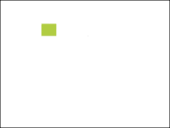Ko (kana)
こ, in hiragana or コ in katakana, is one of the Japanese kana, each of which represents one mora. Both represent IPA: [ko]. The shape of these kana comes from the kanji 己.
| ko | ||||
|---|---|---|---|---|
| ||||
| transliteration | ko | |||
| translit. with dakuten | go | |||
| translit. with handakuten | (ngo) | |||
| hiragana origin | 己 | |||
| katakana origin | 己 | |||
| spelling kana | 子供のコ (Kodomo no "ko") | |||
| kana gojūon | ||||||||||||||||||||||||||||||||||||||||||||||||||
|---|---|---|---|---|---|---|---|---|---|---|---|---|---|---|---|---|---|---|---|---|---|---|---|---|---|---|---|---|---|---|---|---|---|---|---|---|---|---|---|---|---|---|---|---|---|---|---|---|---|---|
|
||||||||||||||||||||||||||||||||||||||||||||||||||
This character may be supplemented by a dakuten; it becomes ご in hiragana, ゴ in katakana and go in Hepburn romanization. Also, the pronunciation is affected, transforming into [ɡo] in initial positions and varying between [ŋo] and [ɣo] in the middle of words.
A handakuten (゜) does not occur with ko in normal Japanese text, but it may be used by linguists to indicate a nasal pronunciation [ŋo].
| Form | Rōmaji | Hiragana | Katakana |
|---|---|---|---|
| Normal k- (か行 ka-gyō) |
ko | こ | コ |
| kou koo kō |
こう こお こー |
コウ コオ コー | |
| Addition dakuten g- (が行 ga-gyō) |
go | ご | ゴ |
| gou goo gō |
ごう ごお ごー |
ゴウ ゴオ ゴー |
Stroke order
 Stroke order in writing こ |
 Stroke order in writing コ |

Stroke order in writing こ

Stroke order in writing コ
Other communicative representations
| Japanese radiotelephony alphabet | Wabun code |
| 子供のコ Kodomo no "Ko" |
|
|
 |
 | |
| Japanese Navy Signal Flag | Japanese semaphore | Japanese manual syllabary (fingerspelling) | Braille dots-246 Japanese Braille |
- Full Braille representation
| こ / コ in Japanese Braille | |||||||
|---|---|---|---|---|---|---|---|
| こ / コ ko | ご / ゴ go | こう / コー kō/kou | ごう / ゴー gō/gou | Other kana based on Braille こ | |||
| きょ / キョ kyo | ぎょ / ギョ gyo | きょう / キョー kyō/kyou | ぎょう / ギョー gyō/gyou | ||||
| Preview | こ | コ | コ | ご | ゴ | |||||
|---|---|---|---|---|---|---|---|---|---|---|
| Unicode name | HIRAGANA LETTER KO | KATAKANA LETTER KO | HALFWIDTH KATAKANA LETTER KO | HIRAGANA LETTER GO | KATAKANA LETTER GO | |||||
| Encodings | decimal | hex | decimal | hex | decimal | hex | decimal | hex | decimal | hex |
| Unicode | 12371 | U+3053 | 12467 | U+30B3 | 65402 | U+FF7A | 12372 | U+3054 | 12468 | U+30B4 |
| UTF-8 | 227 129 147 | E3 81 93 | 227 130 179 | E3 82 B3 | 239 189 186 | EF BD BA | 227 129 148 | E3 81 94 | 227 130 180 | E3 82 B4 |
| Numeric character reference | こ | こ | コ | コ | コ | コ | ご | ご | ゴ | ゴ |
| Shift JIS[1] | 130 177 | 82 B1 | 131 82 | 83 52 | 186 | BA | 130 178 | 82 B2 | 131 83 | 83 53 |
| EUC-JP[2] | 164 179 | A4 B3 | 165 179 | A5 B3 | 142 186 | 8E BA | 164 180 | A4 B4 | 165 180 | A5 B4 |
| GB 18030[3] | 164 179 | A4 B3 | 165 179 | A5 B3 | 132 49 152 50 | 84 31 98 32 | 164 180 | A4 B4 | 165 180 | A5 B4 |
| EUC-KR[4] / UHC[5] | 170 179 | AA B3 | 171 179 | AB B3 | 170 180 | AA B4 | 171 180 | AB B4 | ||
| Big5 (non-ETEN kana)[6] | 198 183 | C6 B7 | 199 75 | C7 4B | 198 184 | C6 B8 | 199 76 | C7 4C | ||
| Big5 (ETEN / HKSCS)[7] | 198 249 | C6 F9 | 199 175 | C7 AF | 198 250 | C6 FA | 199 176 | C7 B0 | ||
| Preview | こ゚ | コ゚ | ||
|---|---|---|---|---|
| Unicode name | HIRAGANA LETTER BIDAKUON NGO[8] | KATAKANA LETTER BIDAKUON NGO[8] | ||
| Encodings | decimal | hex | decimal | hex |
| Unicode | 12371 12442 | U+3053+309A | 12467 12442 | U+30B3+309A |
| UTF-8 | 227 129 147 227 130 154 | E3 81 93 E3 82 9A | 227 130 179 227 130 154 | E3 82 B3 E3 82 9A |
| Numeric character reference | こ | こ | コ | コ |
| Shift JIS-2004[9] | 130 246 | 82 F6 | 131 152 | 83 98 |
| EUC-JIS-2004[10] | 164 251 | A4 FB | 165 251 | A5 FB |
gollark: There are also phones with headphone-jackless FM radio.
gollark: The 3a does have one actually.
gollark: Also an OLED display and I don't like those.
gollark: Notably, no micro-SD slot, no removable battery (not that this is available in many recent ones anyway), and no FM radio.
gollark: That is currently my top idea. But it has annoying tradeoffs.
References
- Unicode Consortium (2015-12-02) [1994-03-08]. "Shift-JIS to Unicode".
- Unicode Consortium; IBM. "EUC-JP-2007". International Components for Unicode.
- Standardization Administration of China (SAC) (2005-11-18). GB 18030-2005: Information Technology—Chinese coded character set.
- Unicode Consortium; IBM. "IBM-970". International Components for Unicode.
- Steele, Shawn (2000). "cp949 to Unicode table". Microsoft / Unicode Consortium.
- Unicode Consortium (2015-12-02) [1994-02-11]. "BIG5 to Unicode table (complete)".
- van Kesteren, Anne. "big5". Encoding Standard. WHATWG.
- Unicode Consortium. "Unicode Named Character Sequences". Unicode Character Database.
- Project X0213 (2009-05-03). "Shift_JIS-2004 (JIS X 0213:2004 Appendix 1) vs Unicode mapping table".
- Project X0213 (2009-05-03). "EUC-JIS-2004 (JIS X 0213:2004 Appendix 3) vs Unicode mapping table".
This article is issued from Wikipedia. The text is licensed under Creative Commons - Attribution - Sharealike. Additional terms may apply for the media files.

